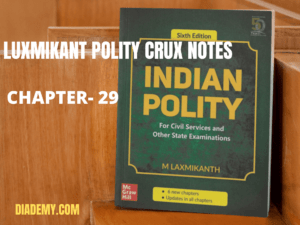
Public Interest Litigation
| Public Interest Litigation | Originated and developed in the USA in 1960.
To provide legal representation to previously unrepresented groups and interest. |
| Meaning of PIL | · PIL is a product of the judicial activism role of the Supreme Court. It was introduced in 1980s.
· PIL is a product of the judicial activism role of the Supreme Court. It was introduced in 1980s. · Justice V.R. Krishna Iyer and Justice P.N. Bhagwati were the pioneers of the concept of PIL. · Also known as- · Social Action Litigation (SAL) · Social Interest Litigation (SIL) · Class Action Litigation (CAL). · Product of the Judicial Activism role of the SC. · Any Public- spirited citizen on a social organisation can move the court for the enforcement of the Rights of any person or Group of person etc. · Maintaining Rule of Law. · Meaningful realisation of FundamentalRights. |
| FEATURES OF PIL | · reach of the people (poor masses), who constitute the
· Low visibility area of humanity. · Role held by the Court is more assertive than in traditional action. |
| SC, 1988 formulated a guidelines | · Bonded labour matters
· Neglected children · Non-payment of minimum wages to workers · Petition from riot victims harassment, burning, rape, murder, kidnapping, , Family pension etc. |
| Not entertained as PIL | · Landlord–tenant matters
· Service matters · Complaints against Central/ State Government. · Admission to medical and other educational institution. · Petitions for early hearing of cases · Pending in High Courts and Subordinate Courts |
| PRINCIPLES OF PIL | · Imp. exercise in powers under Articles 32 and 226 of the Constitution.
· Constitutionally bounded to protect the Fundamental Rights · Satisfied about violation of any FRs of a groups. · Disputes b/w Group of peoples in the realm of private law would not be allowed to agitate as a PIL. · Special situation may appoint commission. |
| SC | · In this Context, “PIL is not a pill or a panacea for all wrongs.”
· Protect basic Human Rights · HC should not entertain a writ petition by way of PIL. |
| History of PIL IN India | • January 1979: The Indian Express reported about the inhuman condos. In which 18 prisoners, including 6 women, were languishing in Patna and Muzuffarpur jails, as they awaited trial, at times for periods longer than they would have been senterned to, had they been convicted.
• Kapila Hingorani, and her husband Nirmal Hingorani, adurates prisoners. • But back then, according to Indian law, a petition could only be filed if you were a victim or a relative. • The couple then hit upon the novel idea of filing a habeas corpus petition on the prisoners behalf. |
| Guidelines to admit PIL | • Must encourage genuine and bona fide PIL – discourage and curb PIL filed for extraneous considerations
• High Court formulate rules for encouraging genuine PIL. • Court should prima facie verify credentials of petitioner. • Satisfy itself substantially that public interest is involved. • Ensure that PIL is aimed at redressal of genuine public come and public injuries – No private motive behind a filing • Ensure petition filed by ulterior motive is imposed with exemplary costs to curb such further cases |
Get all essential Crux notes by clicking here https://diademy.com/product/staticcrux/